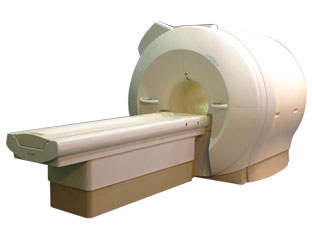 | Info
Sheets |
| | | | | | | | | | | | | | | | | | | | | | | | |
 | Out-
side |
| | | | |
|
| | | | |
Result : Searchterm 'Flow Compensation' found in 1 term [ ] and 12 definitions [ ] and 12 definitions [ ], (+ 5 Boolean[ ], (+ 5 Boolean[ ] results ] results
| 1 - 5 (of 18) nextResult Pages :  [1] [1]  [2 3] [2 3]  [4] [4] |  | |  | Searchterm 'Flow Compensation' was also found in the following service: | | | | |
|  |  |
| Flow Compensation |  |
| |
|
| |  | | | | • Share the entry 'Flow Compensation':    | | | | | | | | | |  Further Reading: Further Reading: | Basics:
|
|
| |
|  | |  |  |  |
| |
|
Quick Overview
NAME
Cerebro spinal fluid pulsation
Pulsatile cerebro spinal fluid flow produces ghost artifacts that are superimposed in the image.

Image Guidance
| |  | |
• View the DATABASE results for 'Cerebro Spinal Fluid Pulsation Artifact' (3).
| | | | |
|  | |  |  |  |
| |
|
Quick Overview Please note that there are different common names for this artifact.
REASON
Movement of body fluids
Flow effects in MRI produce a range of artifacts, e.g. intravascular signal void by time of flight effects; turbulent dephasing and first echo dephasing, caused by flowing blood.
Through movement of the hydrogen nuclei (e.g. blood flow), there is a location change between the time these nuclei experience a radio frequency pulse and the time the emitted signal is received (because the repetition time is asynchronous with the pulsatile flow).
The blood flow occasionally produces intravascular high signal intensities due to flow related enhancement, even echo rephasing and diastolic pseudogating. The pulsatile laminar flow within vessels often produces a complex multilayered band that usually propagates outside the head in the phase encoded direction. Blood flow artifacts should be considered as a special subgroup of motion artifacts.

Image Guidance
| | | |  | |
• View the DATABASE results for 'Flow Artifact' (6).
| | | | |  Further Reading: Further Reading: | News & More:
|
|
| |
|  |  | Searchterm 'Flow Compensation' was also found in the following service: | | | | |
|  |  |
| |
|

'Next generation MRI system 1.5T CHORUS developed by ISOL Technology is optimized for both clinical diagnostic imaging and for research development.
CHORUS offers the complete range of feature oriented advanced imaging techniques- for both clinical routine and research. The compact short bore magnet, the patient friendly design and the gradient technology make the innovation to new degree of perfection in magnetic resonance.'
Device Information and Specification
CLINICAL APPLICATION
Whole body
Spin Echo, Gradient Echo, Fast Spin Echo,
Inversion Recovery ( STIR, Fluid Attenuated Inversion Recovery), FLASH, FISP, PSIF, Turbo Flash ( MPRAGE ),TOF MR Angiography, Standard echo planar imaging package (SE-EPI, GE-EPI), Optional:
Advanced P.A. Imaging Package (up to 4 ch.), Advanced echo planar imaging package,
Single Shot and Diffusion Weighted EPI, IR/FLAIR EPI
STRENGTH
20 mT/m (Upto 27 mT/m)
| |  | |
• View the DATABASE results for 'CHORUS 1.5T™' (2).
| | | | |
|  | |  |  |  |
| |
|
Quick Overview
HELP
cardiac and respiratory synchronization
Movement of the heart causes blurring and ghosting in the images. The artifacts appear in the phase encoding direction, independent of the direction of the motion.

Image Guidance
These artifacts can be reduced by using cardiac synchronization: triggering, gating or retrospective triggering. Maximum reduction can be achieved by using triggering in combination with flow compensation, respiratory triggering or breath hold and regional saturation techniques.
See also Motion Artifact. | | | |  | |
• View the DATABASE results for 'Cardiac Motion Artifact' (2).
| | | | |  Further Reading: Further Reading: | | Basics:
|
|
News & More:
| |
| |
|  | |  |  |
|  | 1 - 5 (of 18) nextResult Pages :  [1] [1]  [2 3] [2 3]  [4] [4] |
| |
|
| |
 | Look
Ups |
| |